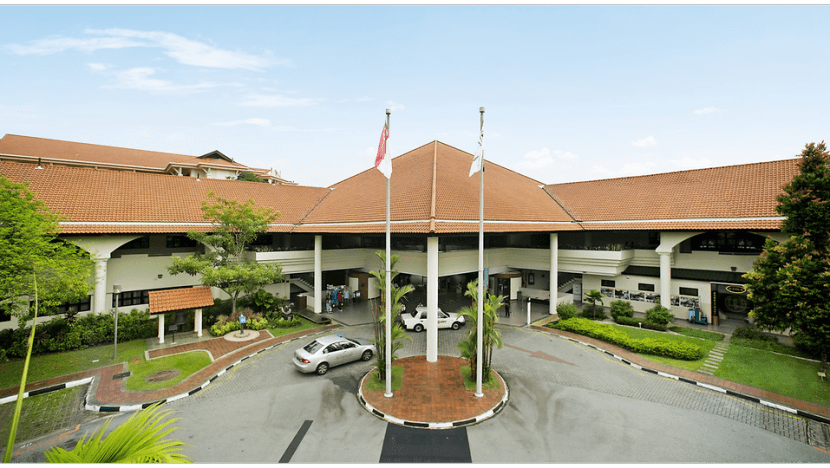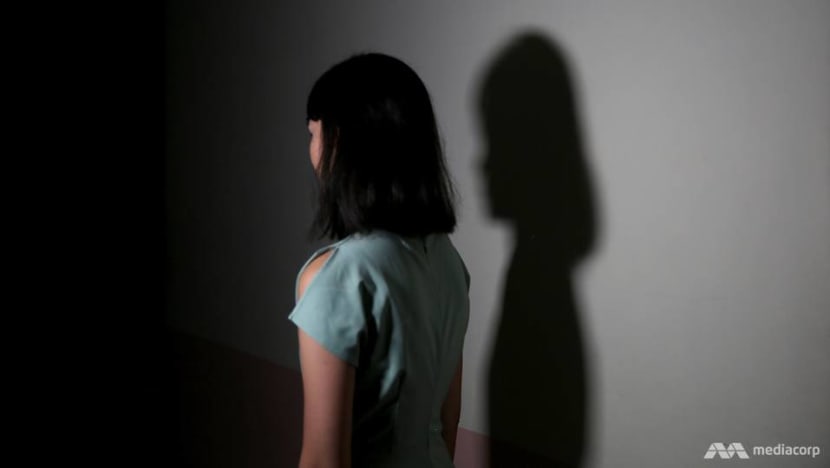It isn’t all about mental disorders — the little-known casework done in IMH’s emergency room
Faced with job losses or pandemic-induced stress, more people are in need of help. These are just some of the cases the Institute of Mental Health’s Emergency Services are seeing.

File photo of the Institute of Mental Health.
SINGAPORE: The number of patients seeking help this year from the Institute of Mental Health’s (IMH’s) 24-hour Emergency Services has gone up as more people became stressed amid the COVID-19 pandemic.
Some of these patients face adjustment disorders due to the pandemic, presenting anxiety and depressive symptoms, said Adjunct Associate Professor Lee Cheng, senior consultant and vice-chairman (clinical) of the IMH Medical Board.
“Some can’t get used to being retrenched from work; some (have) monetary problems,” said Lee, who also heads the Emergency Services department.
The “circuit breaker” had also affected people in different ways, he added. One patient, for example, had a phobia about getting the coronavirus and refused to leave home; another could not tolerate being cooped up in the house.
The latter, fed up with the social restrictions, would take a “bus to nowhere” and travel round the island.
“Sometimes people get irritated or frustrated. It may not be a psychiatric disorder,” said Lee. “But (for some), these symptoms are too distressing, so they end up coming to the emergency room.”
For those with mild symptoms, his team would approach the patients’ loved ones or even family service centres (FSCs) and counsellors for help.
“We don’t want to over-medicate them … (We) try to draw on their strengths and their coping skills,” he said, adding that those with financial problems would be linked up with social workers.

But there are also suicidal cases — and a lot more that goes on in the IMH Emergency Services department that little is known about, CNA Insider finds out ahead of World Mental Health Day today.
50 TO 60 PATIENTS A DAY
Situated near the entrance of the IMH, the department sees 50 to 60 patients a day, compared with a daily turnover of a few hundred patients at the accident and emergency departments in public hospitals.
The cases are mainly those facing acute stress, said Lee. There are also cases of relapse among those suffering from schizophrenia, bipolar disorder or recurrent depression.
“We don’t call it A & E because the ‘A’ stands for accidents. We don’t have accident cases here,” he said. “We definitely have overdose (patients). But we call it ‘services ’… rather than a department.”
The waiting time to see a doctor is typically under an hour for patients who are given high priority, and about two hours or less for other patients.
It is as such because the clinical staff must screen for patients at high risk, and must also link up with community partners and the family members to ascertain the patient’s medical and personal history, said Lee.
“The easy way out is to admit (the patient), but we need to be patient-centric, (find out) what the patient requires (clinically), and we fulfil their requirements,” he added.
Patients with no mental illness or acute stress would be discharged without an outpatient appointment, depending on the doctor’s assessment. Sometimes they would be referred to an FSC if they encounter relationship problems.
Patients found to have a psychiatric condition, however, are usually warded or given an outpatient appointment at a later date. On average, 30 to 40 per cent of walk-ins at the Emergency Services — about 20 patients a day — are warded.
The department, manned by a team of consultants, junior doctors, nurses, social workers and pharmacists, saw a five per cent increase in cases last year compared with 2018, partly due to increased awareness of mental health, said Lee.
There has been another increase this year, although the figure will be known only once the year is over, according to the IMH.

OBSERVATION CAN LAST 23 HOURS
Emergency Services staff typically attend to acute cases first, who are divided into two groups: Those who require admission and those who do not.
Those suffering from schizophrenia or assessed as “very psychotic or very unwell”, said Lee, are admitted straight to the ward. The other group of patients are placed in an observation ward, an open area with six beds.
“The staff will take care of the patient and … observe the patient’s behaviour because sometimes the patient may not tell us the truth or they’re very guarded,” he added.
Patients can be kept in the observation ward for up to 23 hours, and the clinical team assessing them would contact the family members to ascertain the patient’s background, situation and medical history.
“After 23 hours, if we still feel that their condition isn’t well … then they’d be admitted,” said Lee. “If we assess that the acute risk is over, we’d discharge them.”
Most patients under observation are “adjustment cases”. This means they face some form of acute pressure, such as a child who refuses to go to school, a couple quarrelling or a conscript unable to cope with military life.
“We also don’t want to put them in a psychiatric ward,” said Lee. “We don't know what the … psychiatric diagnosis is either. We have to be fair … (as) these are mainly acute stresses.”
Where patients are warded immediately, some of them may have been brought in by the police and “assessed by the attending doctor (as) an acute danger to himself or even to others”.
“(If) the patient refuses to be admitted, then we’d use what we call a formalised admission … whereby the patient is admitted against (his or her) wish,” added Lee.
Usually, patients escorted by the police or sent by the courts — for example to determine if they have any psychiatric condition — must enter Emergency Services via a separate entrance and are housed in a different area.
This is necessary as other patients “may be traumatised by those in handcuffs”, Lee said. “We don’t want patients who are coming for treatment (to) get worried, seeing this patient … screaming away or intoxicated.”
ACTING AS GATEKEEPERS
The staff also work with the police in regard to patients who had been suicidal and were brought to Emergency Services.
In these cases, the clinical staff must determine the suicide risk by, for example, ascertaining whether it is the first suicide attempt or there have been other attempts.
Those with a pre-existing psychiatric condition, such as depression and schizophrenia, would be taken more seriously, cited Lee, as with those who have written a suicide note or made a will, or perhaps those with poor family support.

Where the suicide risk is high, the patient is typically kept for observation or warded immediately. “We take it in a holistic manner. A lot depends on the clinical judgement,” said Lee.
His team act as gatekeepers, determining the relevant cases for admission. Patients who do not require tertiary psychiatric care can be channelled back into the community, where they can find support at various FSCs.
The misconception many people have, he said, is that those who suffer from a severe mental disorder must be admitted.
“The diagnosis may be severe, but currently (the condition) may be mild,” he pointed out. “A lot of patients with schizophrenia are functioning in the community, contributing to the workforce. They aren’t a danger to others or to themselves.”
He advised patients with minor psychiatric conditions to seek help from general practitioners with psychiatric knowledge, instead of waiting at the IMH’s Emergency Services.
The department also has a Mobile Crisis Team, who can be despatched to an existing IMH patient’s home to provide support when needed.
Moving forward, telemedicine may play a bigger role in reducing travel among both existing and new patients, especially during this pandemic, said Lee.
This has already started for some IMH patients from nursing homes — they can be screened in situ, which saves on the travel time too.
“Tele-psychiatry is the best way to prevent unnecessary movement of staff in the community and reduce exposure to the virus,” said Lee. “It can also reduce the stigma (attached to patients visiting the IMH).”












